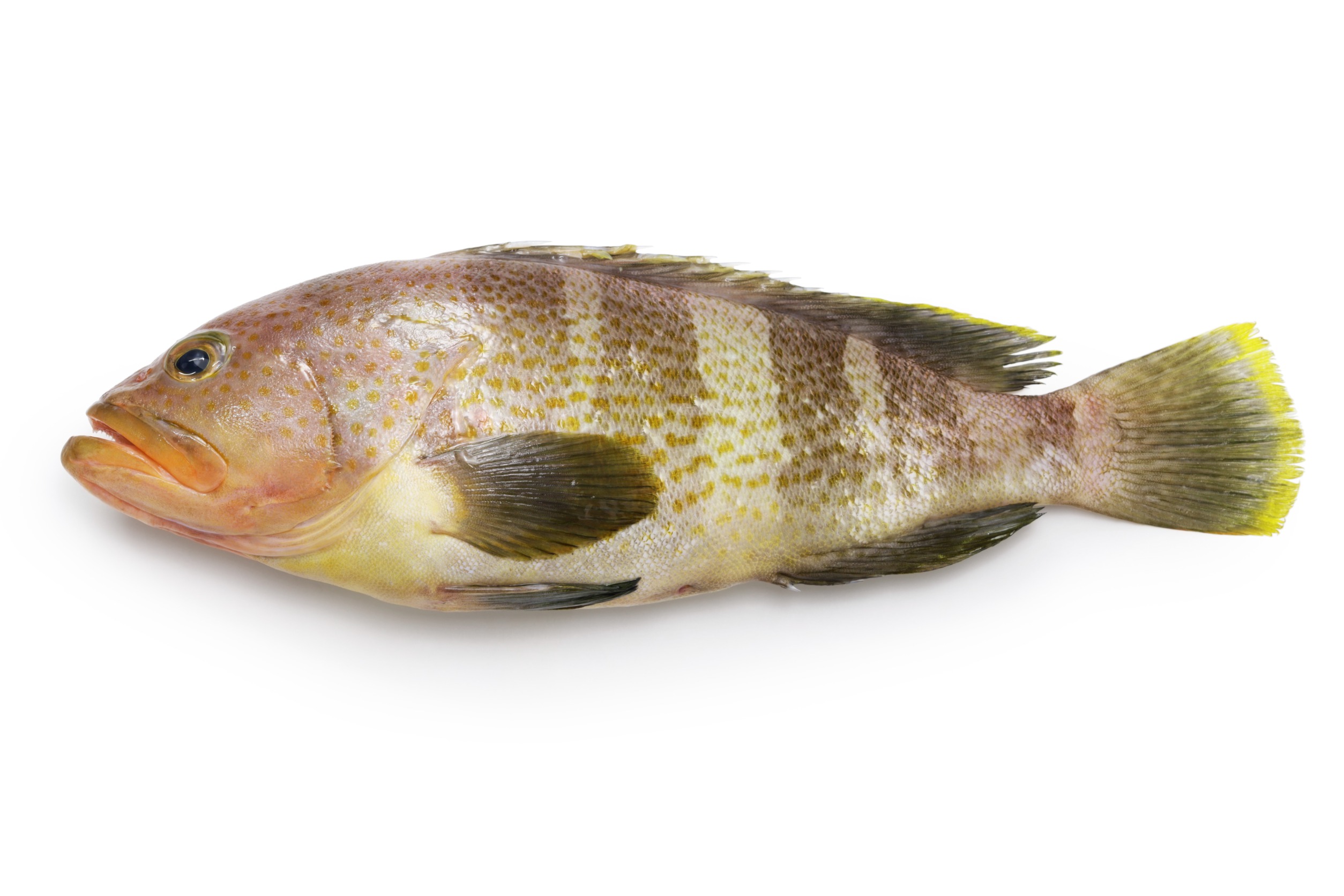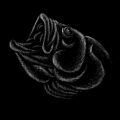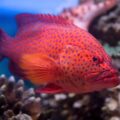Yellowmouth grouper is a type of marine ray-finned fish. They are relatively large fish, and their body appearance is brownish and has a lot of dots and splotches. They have giant mouths that are yellow at the margin, and the pectoral fins are pale at the base and edge.
They eat crustaceans that are 1 to 2 feet long. This grouper species is found in coral reefs at depths of 10 to 80 feet. Let’s learn more about their habitat, appearance, behavior, eating habits, etc.

Habitat
The yellowmouth grouper is found in the Atlantic Ocean and the Caribbean Sea. They live 60 to 150 feet deep underwater in coral and rocky reef ledges. Moreover, these grouper species favor caves and crevices, where they protect themselves from predators.
Food
Yellowmouth groupers are opportunistic predators that eat different types of prey. They eat squid, small fish, and crustaceans. As they grow up, they change their eating behavior from small targets to larger prey items, including species of jacks and barracudas. They are known to ambush their prey through their keen senses of sight and smell to locate food.
Appearance
This grouper species is large and powerful and have a remarkable appearance. They have big mouths and wider, triangular heads, from which they get their title. Their bodies are yellow and brown with small dark spots; their fins are light and yellow sheds.
Besides, their growth rate is a maximum of 33.07 inches long and a weight of more than 22.49 pounds. Young yellowmouth groupers have a vertical black stripe running down their sides, which fades as they mature. In addition, their lower gill cover has a black spot that helps identify them from other identical species.
Behavior
Yellowmouth grouper is a territorial fish and does not socialize. Generally, they live in the same place for most of their lives. They are dormant during the day and active when hunting for food at night. During the breeding season, they become aggressive toward intruders. Moreover, they keep themselves in caves to eliminate their predators when they feel endangered.
Lifespan
The average lifespan of yellowmouth grouper is around 15 years in the wild. Their population estimated doubling time at 4.5 to 14 years. However, because of overfishing and habitat degradation, these species are decreasing in many areas of the world. They are now protected by limiting fishing in closed seasons in many regions.
Reproduction
This grouper species is born as females and turns into males when they become adults. Though they are slow-growing fish, their lifespan is more extended. Their reproduction process is external fertilization. They reach their sexual maturity at a late age.
During the breeding season, numerous male and female grouper gather to spawn. Female groupers release eggs in water, and males fertilize through sperm. Later eggs hatch into larvae, which gradually develop into juvenile fish.
Perception and communication
Yellowmouth groupers can navigate and interact with the environment through communication and perception tactics. They can use visual and auditory cues to communicate with other fish species. They can change the color of their body to show aggression or liaison.
They can also make sounds such as croaks, growls, and grunts for communication. They have a lateral line system to perceive things. Their highly developed sense of smell is used to identify potential prey and locate food.
What does yellowmouth grouper taste like?
Yellowmouth grouper has a mild flavor and tastes like something between seabass and halibut, with a sweet taste and chunky flakes, mostly like lobster or crab. However, the flavor can be enhanced by cooking it with herbs and spices.
What is the average size of the grouper?
The average size of a yellowmouth grouper can range from 2-3 feet in length, although some individuals can grow up to 4 feet or longer. The weight of a yellowmouth grouper can vary depending on its size, but it can reach up to 50 pounds or more. It’s worth noting that yellowmouth grouper is a slow-growing and long-lived species.
How can grouper be cooked?
Depending on how it is prepared, grouper is cooked into sandwiches or fillets. There are several ways to prepare this fish, which has a relatively mild flavor, including pan-frying, broiling, baking, grilling, stuffing, and rolling. Grouper is a healthy seafood option since it is low in fat and cholesterol in addition to its deliciousness.
Do groupers grow faster?
The growth rate of grouper species is slower than other popular aquarium fish such as wrasses and clownfish. Growth rates average approximately four inches (10 cm) per year until age six, decline to about 1.2 inches (3 cm) at 15 years, and remain at that level for several years after that.
Conclusion
Yellowmouth grouper species are found in the Atlantic Ocean and the Caribbean Sea. It has a mildly sweet and firm texture, is a good source of protein, and can be cooked in different ways. Some of the essential facts about them are pointed out below.
-
- Yellowmouth Grouper groupers are found in coral reefs at depths of 10 to 80 feet.
-
- To communicate with other fish species, they use visual and auditory cues.
-
- They can make sounds such as crocks, growls, and grunts for communication.
-
- As opportunistic predators, they eat squid, small fish, and crustaceans.
They are slow-growing fish but can survive for a long time. They are opportunistic predators and eat different types of prey like squid, small fish, and crustaceans. Overall, they are delicious fish and a good source of protein.











